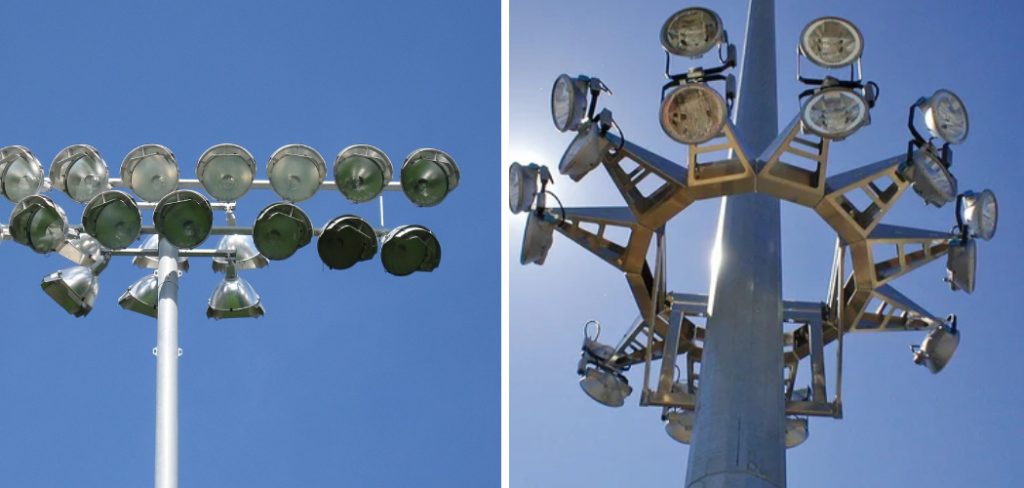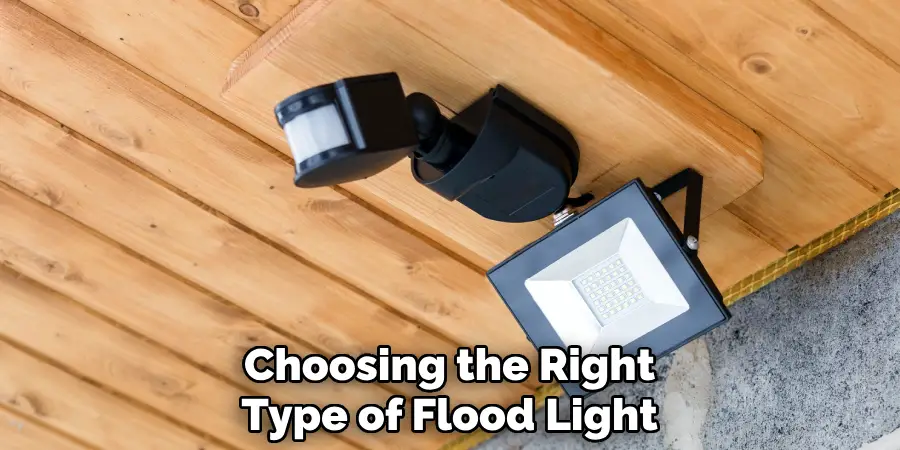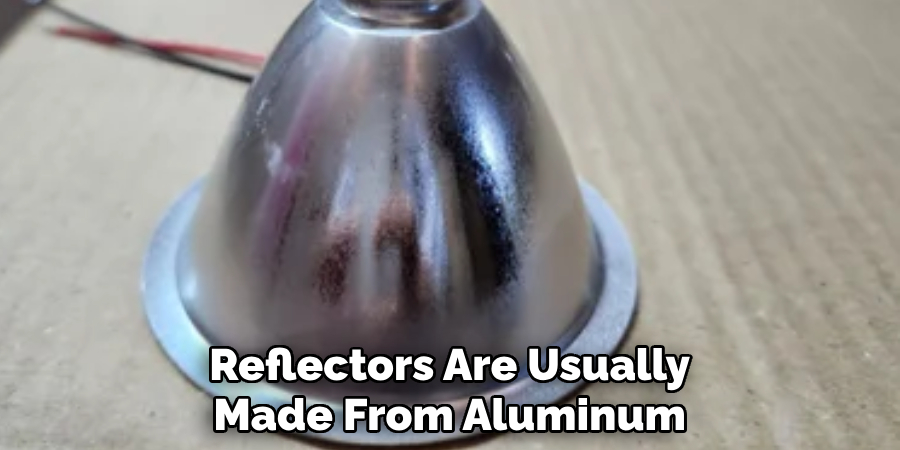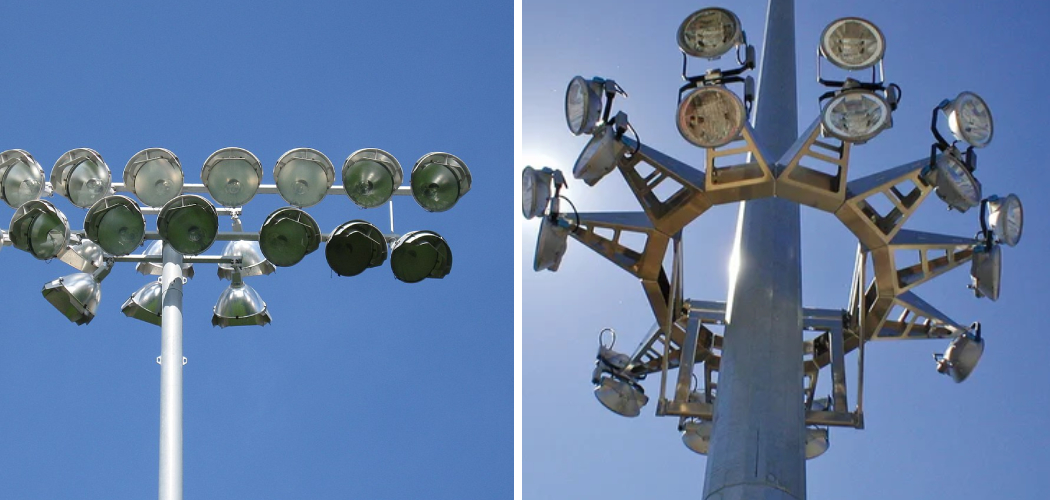Floodlights are a common feature in outdoor lighting, often used for security, sports events, and outdoor gatherings. But have you ever wondered how these powerful lights work to illuminate large areas with such intensity?

In this article, we will delve into how do flood lights work, shedding light on the science behind their operation. At their core, floodlights are high-intensity, broad-beamed artificial lights designed to flood an area with a strong and even illumination. They consist of several key components and technologies that work in harmony to produce their characteristic brightness.
Understanding these components, including the type of bulbs used, the role of reflectors, and the power source, will give you insights into the science of floodlighting.
Whether you’re planning to install floodlights for security purposes or to illuminate your outdoor spaces, a grasp of how floodlights work is essential for making informed choices and optimizing their performance. So, let’s embark on an enlightening journey into the world of floodlights and uncover the secrets of their operation.
The Importance of Flood Lights in Outdoor and Security Lighting
Flood lights are a type of lighting fixture that is designed to provide high intensity, broad-spectrum light to illuminate large areas. They are commonly used in outdoor and security lighting applications, where a large amount of light is needed to cover a wide area.
Flood lights typically consist of one or more high-powered lamps mounted on a metal reflector, which helps direct the light in a specific direction. These lamps can be incandescent, fluorescent, or LED, with LED flood lights becoming increasingly popular due to their energy efficiency and long lifespan.
One of the key benefits of using flood lights is their ability to provide bright and even illumination across a large distance. This makes them ideal for lighting up outdoor spaces such as sports fields, parking lots, and building exteriors. Flood lights can also be used for security purposes, as their bright light can help deter potential intruders.
In addition to their functional purposes, flood lights also contribute to the overall aesthetic of a space. With advancements in technology, flood lights now come in various colors and designs, allowing for creative and customizable lighting solutions. For example, color-changing LED flood lights can be used to create a vibrant atmosphere for events or special occasions.
When it comes to outdoor and security lighting, choosing the right type of flood light is crucial. Factors such as wattage, beam angle, color temperature, and weather resistance should all be taken into consideration. Consulting with a professional lighting expert can help determine the best flood light solution for specific needs and applications.

10 Methods How Do Flood Lights Work
1. Incandescent Bulbs
Flood lights typically use incandescent bulbs, which are light bulbs that produce light by heating a metal filament inside the bulb. The filament is heated to a high temperature, causing it to glow brightly and emit visible light. This type of bulb is relatively inexpensive and produces a warm, yellowish light.
2. Halogen Bulbs
Halogen bulbs are another type of bulb often used in flood lights. These bulbs contain a halogen gas, which helps to increase the efficiency of the bulb by allowing it to produce more light with less energy. Halogen bulbs also produce a whiter, brighter light than incandescent bulbs.
3. LED Bulbs
LED (light emitting diode) bulbs are becoming increasingly popular in flood lights due to their high efficiency and long lifespan. LED bulbs are much more efficient than incandescent or halogen bulbs, meaning they require less energy to produce the same amount of light. Additionally, LED bulbs have an extremely long lifespan; some can last up to 50,000 hours or more!
4. Reflectors
Reflectors are used in flood lights to help direct the light produced by the bulb in a specific direction. Reflectors are usually made from aluminum or other reflective materials and can be shaped into different forms depending on the desired beam pattern of the flood light. By using reflectors, flood lights can be designed to illuminate large areas with very little wasted energy or spillover lighting outside of the desired area.

5. Lenses
Lenses are often used in combination with reflectors in order to further control the beam pattern of a flood light by focusing or diffusing the beam as needed for different applications. Lenses can be made from various materials such as glass, plastic, acrylics and polycarbonates and come in many different shapes and sizes depending on the application they’re being used for.
6. Mounting Brackets
Mounting brackets are used to attach floodlights securely to walls or ceilings so that they don’t move when turned on or off or when exposed to windy conditions outdoors. Most mounting brackets are adjustable so that you can adjust the angle at which your flood lights point in order to get better coverage of an area you’re trying to illuminate with them.
7. Electrical Connections
Electrical connections such as wires and plugs must be properly connected in order for your flood lights to work properly and safely without any risk of electric shock or fire hazards due to poor connections or faulty wiring techniques. It is important that these connections be done correctly according to local electrical codes and safety standards before turning on your floodlights for the first time.
8. Timers & Motion Sensors
Timers & motion sensors can be added onto your existing floodlight setup if you want them to automatically turn on/off at certain times during the day/night, as well as detect movement within their range. This allows you to save energy by only having your lights turn on when needed while still providing adequate lighting when necessary.
9. Surge Protection Devices
Surge protection devices protect your expensive electronic equipment from power surges, which could potentially damage them beyond repair if not prevented beforehand. Surge protection devices should always be installed near any electronic equipment, including your outdoor lighting fixtures, especially if there is frequent lightning activity nearby where you live.
10. Weatherproofing Materials
Weatherproofing materials such as waterproof sealant, gaskets & weather stripping should always be applied around any outdoor lighting fixtures before installation; this will help ensure that water does not enter into any openings around them during rainstorms or other wet weather conditions. This will also help extend their life expectancy significantly since they won’t have moisture getting into their internal components over time.

Things to Consider When Working With Flood Light
Flood lights are a popular choice for illuminating outdoor spaces, whether it’s for security purposes or enhancing the aesthetics of your property. These powerful lights can be a great addition to any home or business, but there are a few things you should consider before installing them. Here are some factors to keep in mind when working with flood lights:
Purpose and Placement
The first thing you need to determine is the purpose of your flood light. Are you looking to improve safety by lighting up walkways and entrances? Or do you want to enhance the appearance of your landscape at night? The purpose will help guide your placement decisions.
If you’re using flood lights for security reasons, they should be strategically placed high above ground level so that they cover a wide area and can’t be easily tampered with. On the other hand, if you’re using them for decorative purposes, you may want to experiment with different angles and distances to achieve your desired effect.
Type of Light
There are various types of flood lights available on the market, each with its own advantages and disadvantages. Some common options include halogen, LED, and solar-powered flood lights.
Halogen flood lights are known for their bright white light and affordability, but they consume more energy compared to LED lights. LED flood lights have become increasingly popular due to their energy efficiency and longer lifespan. Solar-powered flood lights use renewable energy from the sun and don’t require any wiring, making them a great option for remote areas or environmentally-conscious individuals.
Power Source and Wiring
Before purchasing and installing flood lights, it’s important to consider the power source and wiring requirements. Some flood lights require a direct connection to a power source, while others can be plugged into an outlet. Solar-powered flood lights are completely wireless, but they may not be suitable for areas with limited sunlight.

Conclusion
In summary, flood lights work by allowing light to pass through a reflector and then illuminating the surrounding area with its incredible brightness. What makes this system so dependable is that it utilizes an efficient energy consumption for extended periods of time.
Even if you are looking to install additional lighting, flood lights can provide a perfect solution since their benefit extends beyond saving money on electricity bills, their widespread reach ensures that there are no dark areas left without enough lighting.
You now know firsthand how do flood lights function in order to properly use and maintain them in the future. So what are you waiting for? Try using these tips on how do flood lights works today and see the results. With assurance of brighter and more sustained illumination than ever before, your outdoor ambiance will thank you for making the right choice!

